|
LSMO Thin films deposited by PLD as electrodes for
spintronic applications
Among spintronic materials, mixed-valence manganite
La0.7Sr0.3MnO3 (LSMO) is widely investigated due to its half-metal nature.
LSMO thin films were grown by pulsed laser deposition (PLD) onto amorphous
silica substrates heated at nearly 600 C.
An ArF excimer laser was chosen to
induce ablation due to its more energetic photons compared to the other
quoted excimer laser sources. Different oxygen pressures were considered in
order to study the influence of oxygen on the LSMO optical and electrical
properties. In this respect, the visible transparency percentage of the
deposited films is found good enough for spin-OLED applications.
The absorption coefficient shows an
absorption band tunable as a function of the oxygen content. Its energetic
location and evolution with the oxygen content demonstrate it originates
from radiative transitions between the spin-majority bands separated by the
Jahn–Teller distortion. All of this lets relate the deposition oxygen
pressure to the Mn3+
ion content in each film and interpret
electrical data. The 200 and 100 nm thick samples exhibit weak metallic
transport behavior at room temperature with a resistivity of 4.8 and 6.9
Vcm, respectively. Concerning the resistivity
response versus
temperature, the measured low metal–insulator transition temperature (150 K)
is related to the sample structural features as involved by the depositions.
Two different transport mechanisms describe the conductivity regime of
the deposited samples, namely the small polaron variable range hopping (VRH)
and the Arrhenius law.
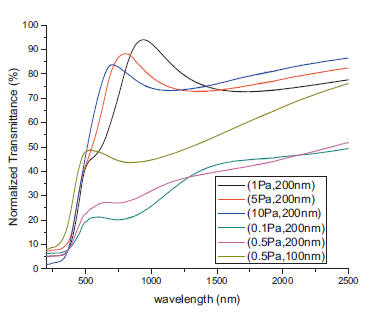
Figure 1 Measured
transmittance spectra normalized to the bare substrate as a function of the
oxygen pressure.
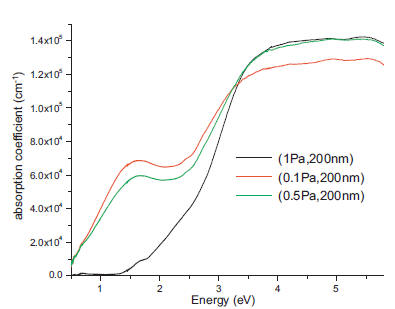
F
Figure 2
Computed absorption curves of the LSMO films deposited at the lowest oxygen
pressure
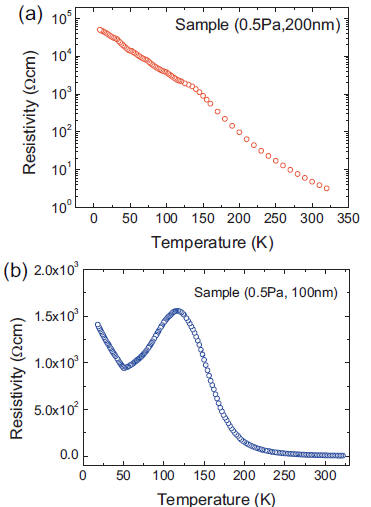
Figure 3 Temperature-dependent
resistivity in zero-magnetic field of the sample (a) (0.5 Pa,
200 nm) and (b) (0.5 Pa, 100 nm).
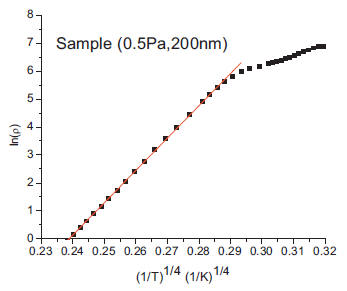 F F
Figure 4 Small polaron VRH
conduction mechanism is satisfied above 150K by the sample (0.5 Pa, 200 nm).
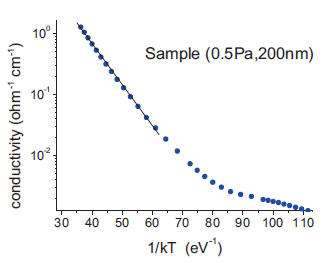
Figure 5 The
Arrhenius conduction mechanism is well satisfied above 150K by the sample
(0.5 Pa, 200 nm).
|
